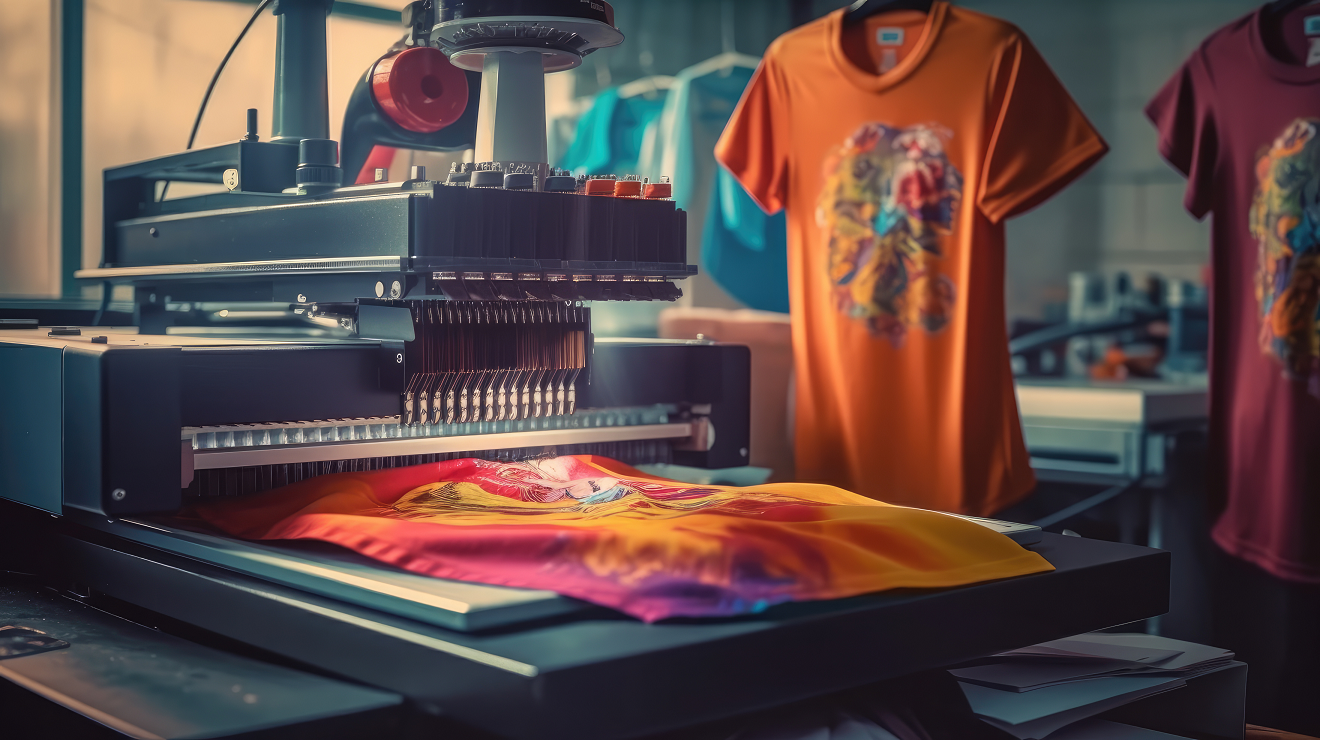Harnessing the Power of MRP Systems in Apparel Software
Efficient inventory management is crucial for success in the apparel industry. Balancing supply and demand, reducing stockouts, and minimizing excess inventory are constant challenges. To overcome these obstacles, apparel companies are turning to advanced technology solutions, particularly apparel software with Material Requirements Planning (MRP) systems. This blog delves into the effectiveness of MRP systems within apparel ERP software in accurately forecasting inventory requirements and their transformative impact on the apparel and fashion industry.
The Inventory Management Challenge in the Apparel Industry:
The apparel and fashion industry operates in a fast-paced environment with fluctuating customer demands, rapidly changing fashion trends, and seasonal variations. These dynamics make accurate inventory forecasting a challenging task. Traditional methods of inventory management often fall short, leading to stockouts, missed sales opportunities, and increased costs. However, MRP systems within apparel software offer a powerful solution to overcome these challenges.
Understanding MRP Systems in Apparel Software:
Systems powered by MRP in apparel software are specifically designed to streamline inventory management processes. These solutions utilize sophisticated algorithms, historical sales data, production information, and other relevant factors to calculate accurate inventory requirements for both raw materials and finished goods. By automating the inventory planning process, MRP solutions ensure optimal inventory levels are maintained to meet customer demands while minimizing costs.
The Effectiveness of MRP Systems in Forecasting Apparel Inventory:
Research and case studies have demonstrated the effectiveness of MRP systems within apparel ERP software in forecasting inventory requirements with high accuracy. These systems analyze historical data, sales patterns, lead times, production capacities, and demand fluctuations to generate precise forecasts. By considering multiple variables and their interdependencies, MRP systems enable apparel companies to make data-driven decisions and improve supply chain management practices.
Key Features and Benefits of MRP Systems in Apparel Software:
a) Demand Forecasting: MRP systems leverage historical sales data, market trends, and customer behavior to forecast demand accurately. By considering factors such as product categories, sizes, colors, and styles, these solutions enable apparel companies to plan production and procurement activities more effectively.
b) Production Planning and Scheduling: MRP solutions optimize production planning by considering inventory levels, demand forecasts, lead times, and production capacities. By automating these processes, apparel companies can streamline their production schedules, reduce bottlenecks, and ensure timely delivery of products.
c) Procurement and Supply Chain Optimization: MRP systems help apparel companies optimize their procurement activities by aligning them with accurate demand forecasts. By ensuring the right materials are available at the right time, these solutions minimize stockouts, reduce lead times, and enhance overall supply chain efficiency.
d) Inventory Tracking and Control: MRP systems provide real-time visibility into inventory levels, both in-house and across the fashion industry supply chain. This allows apparel companies to track inventory movement, monitor stock levels, and make timely replenishment decisions. By avoiding overstocking or understocking situations, companies can minimize carrying costs and improve customer satisfaction.
e) Enhanced Collaboration and Communication: MRP systems facilitate seamless communication and collaboration among different stakeholders, including designers, manufacturers, suppliers, and retailers. These systems provide a centralized platform for sharing real-time inventory data, enabling stakeholders to make informed decisions and respond quickly to changing market demands.
Will MRP be Suitable for Your Apparel Business?
Our experience has shown that while MRP (Material Requirements Planning) has universally applicable elements for apparel manufacturers across the supply chain, its ultimate success depends on several crucial aspects of your overall manufacturing operations, which need careful analysis. The question is not whether MRP's basic logic applies—because, in most cases, it does—but rather how apparel brands can effectively incorporate this logic into your specific manufacturing system, considering its key control variables and production/inventory tasks. Developing a well-thought-out manufacturing policy is crucial, and this question revolves around that. The answer will provide the foundation for an analysis of what MRP can and cannot do for your apparel business.
To illustrate this analysis, let's consider three general examples:
- Company A: A basic assembly operation with most parts and subassemblies purchased externally. They have long production runs for a few models, and finished goods are stored in an extensive distribution system.
- Company B: A general machine shop that produces products made to order and customer specification. They have complex manufacturing flows and maintain large in-process inventories.
- Company C: A fabrication/assembly operation where most parts are manufactured in a general machine shop and assembled in small quantities based on customer orders and specifications.
The Link Between Manufacturing and Distribution:
For Company A, where a few products are assembled to stock in long production runs, MRP seems like a natural fit. The assembly or master schedule, along with the bill of materials and inventory file, can be used to calculate requirements and offset lead times for purchased parts and subassemblies.
However, it's essential to consider the key production/inventory control tasks specific to this organization. In this case, factory cycle times and in-process inventories are likely to be minimal. In-process inventory control, while still important, isn't the primary focus here. Instead, inventories tend to be concentrated in the distribution system. Thus, Company A's key production/inventory tasks revolve around planning intermediate-term (three to twelve months) production, controlling distribution system inventories, and managing purchase orders. The primary control variables are avoiding stockouts at distribution centers, maintaining smooth production rates, and ensuring a supply of purchased components to avoid disruptions in the assembly lines.
For MRP to be effectively used in this manufacturing environment, it must interface seamlessly with distribution. The master schedule plays a vital role in linking the current stock position at distribution centers with the assembly schedules. Additionally, the master schedule incorporates the intermediate-term production plan, enabling managers to smooth production peaks and valleys.
By breaking down component requirements based on the master schedule and time-phasing, an MRP system can provide purchasing with the necessary information to control acquisitions. MRP can then maintain priorities as schedules change, stockouts become imminent, or deliveries are delayed. However, the primary focus is on distribution, production smoothing, and purchasing as the key tasks and control variables of the system. This, in turn, necessitates a well-developed and efficient distribution and purchasing communication system within the organization.
Shop Floor Control:
Company B presents a different perspective on the usefulness of MRP. With a general machine shop environment focused on piece-part production based on customer orders and specifications, management must be able to provide realistic due dates to customers, coordinate design, manufacturing, and engineering functions with production, and schedule material and work flows across various machine centers. The primary control variables in this scenario are likely the percentage of on-time deliveries, in-process inventories, lead time between customer orders and delivery, and the utilization of machines and manpower.
In contrast to Company A, manufacturing (in-process) inventory and scheduling control are critical activities for Company B. In fact, the majority of inventories are likely to be in-process inventories. Consequently, a robust reporting and scheduling system must be in place on the shop floor to ensure production aligns with priorities obtained from the MRP system. Proper priority management in this context entails maximizing available capacity. The coordination and integration between the MRP system and shop floor control are crucial for their effectiveness.
In this type of environment, an MRP system can serve two additional important functions. Firstly, by offsetting lead times for material requirements, it can help determine realistic due dates for customers. Promising a part's delivery in 10 weeks is of little use if it takes 15 weeks to acquire the necessary materials. Secondly, it can aid in controlling material procurement. By updating material receipts and other relevant information, purchasing personnel can quickly prioritize items and expedite or de-expedite materials accordingly. Moreover, the system provides immediate visibility when materials are expected to arrive too late to meet a due date, enabling management to notify customers promptly or make alternative arrangements.
Buffer Stocks and Work Center Priorities:
The previous examples highlight the significant role MRP plays in various companies, but its impact is particularly pronounced in fabrication/assembly operations like Company C. Historically, this is easily understood.
Fabrication/assembly companies, characterized by a general machine shop fabricating parts and components used in downstream assembly operations, often maintain large buffer inventories. These inventories serve two purposes: to separate the management of the two types of manufacturing for organizational and technical reasons, and to ensure an adequate supply of the numerous parts required for assembly operations and timely order processing.
However, these buffer inventories were typically controlled using reorder point methods that assumed the demands for individual components were independent of each other and independent of the demand for assembled items—which was not the case. Consequently, these companies dealt with large inventories and internal struggles, as the assembly department consistently interfered with fabrication activities to obtain the necessary parts for completing assemblies. For many of these companies, computer-based MRP solutions emerged as the solution. However, the specific requirements of fabrication/assembly operations necessitate a different approach to leverage MRP effectively.
A fabrication/assembly operation like Company C must simultaneously address the key tasks of both assembly operations (similar to Company A) and general machine shop operations (similar to Company B). In other words, it must be responsive to stockouts and customer due dates, ensure the supply of assembly operations, and maintain priorities and schedule equipment in the fabrication area. To achieve this, MRP must act as a link between fabrication and assembly, as well as between assembly and distribution.
As before, the master schedule serves to connect assembly and distribution. However, a shop floor control system for fabrication becomes the link between fabrication and assembly. This system translates the master schedule, through MRP, into priorities that guide the work on specific parts at each work center. In some companies, "capacity requirements planning" serves as an additional link between fabrication and assembly. This technique projects fabrication shop loads based on the master schedule and helps determine labor requirements, subcontracting needs, or equipment needs.
For fabrication/assembly operations, MRP and associated solutions allow companies to maintain the separation between two different types of processes while substituting large intra-organizational inventories with timely information from a centralized source.
In conclusion, MRP systems within apparel management software can be highly effective in the apparel and fashion industry, but their suitability depends on the specific characteristics and requirements of your manufacturing operations. By carefully analyzing your production processes, control variables, and tasks, you can determine how to best incorporate MRP functionality into your apparel software. Whether your business aligns with the assembly-focused approach of Company A, the machine shop environment of Company B, or the fabrication/assembly operations of Company C, an apparel management software solution with robust MRP functionality will help optimize inventory management, enhance production planning, and streamline your supply chain. satisfaction.
ABS Has Apparel ERP Software with MRP Solutions You Need
When it comes to streamlining inventory management and optimizing operations in the apparel and fashion industry, Apparel Business Systems' (ABS) fashion ERP software stands out with its robust MRP functionality. By integrating MRP solutions within the ABS comprehensive ERP solution, ABS empowers apparel and footwear companies to accurately forecast inventory requirements, effectively plan production and procurement activities, and optimize their supply chain. With business processes such as demand forecasting, production planning, procurement optimization, and inventory tracking, Apparel Business Systems' ERP with MRP functionality offers a comprehensive solution that drives efficiency, minimizes costs, and enhances customer satisfaction.
By embracing this powerful technology, apparel businesses can gain a competitive advantage in the ever-evolving fashion supply chain, paving the way for success in the face of dynamic market demands.
Outsourcing your production? No problem! The ABS apparel management solution also offers full supplier, import, costing, and procurement functionality!
Considering learning more about MRP vendors and solutions? Let's have a brief consultation to see if the ABS ERP and warehouse management solutions are the right fit for your organization. Contact us today! info@apparelbusiness.com











